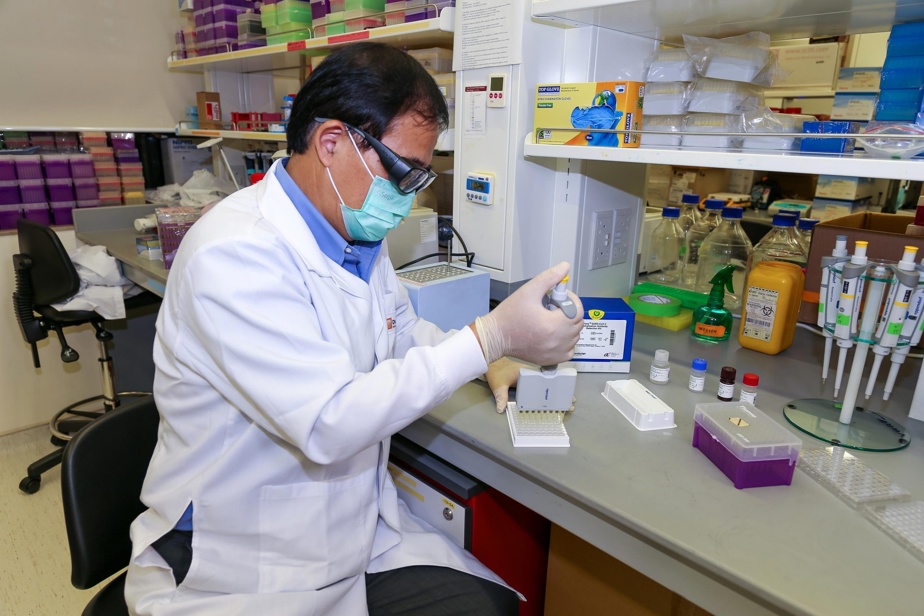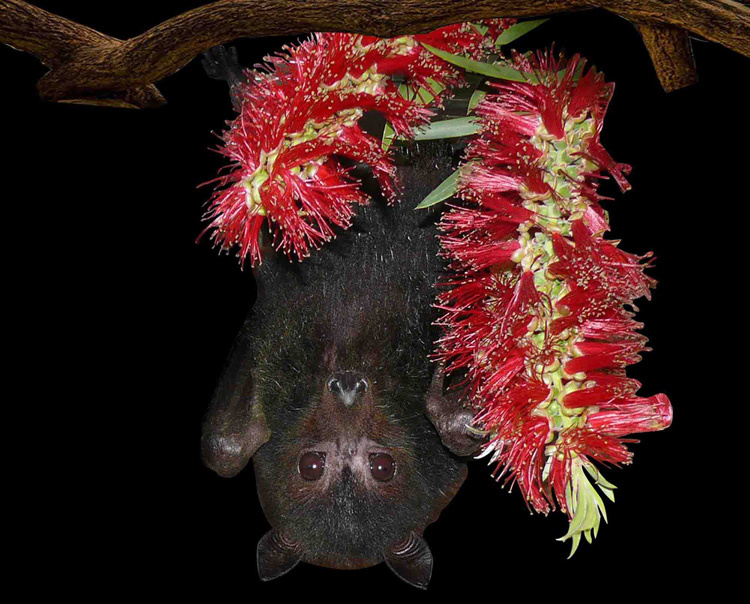Posted on February 28, 2021 at 6:00 a.m.
–
–
Asian bats

PHOTO PROVIDED BY THE UNIVERSITY OF SINGAPORE
Lin-Fa Wang, a biologist at the National University of Singapore, has been studying bats for 25 years.
–
Ebola, SARS, Middle East Respiratory Virus (MERS), Nipah fever and Marburg virus disease, rabies. And, of course, COVID-19. The list of diseases that have their origin in bats is long. “We recently realized that bats play a central role in many human infections,” said Lin-Fa Wang, a biologist from the National University of Singapore who has worked on these animals for 25 years. In the past month, Mr. Wang has published two crucial studies on the subject, one in Nature, where he hypothesizes that the next pandemic could be much less deadly if bats were better known and monitored, and another in Nature Communications, where he shows that cousins of SARS-CoV-2, the coronavirus responsible for COVID-19, are present in bats in northern Thailand, and not just in China. “However, we don’t have a good laboratory rat model to study bats, and we have sequenced the genome of only 20 of the 1300 bat species. If we had a surveillance mechanism for bats in southern China and northern Thailand, Laos and Vietnam, we could certainly identify early on new mutations in viruses capable of infecting humans. It would speed up the development of vaccines and treatments against new infections. “
Immunological buoys

PHOTO HUGO-SÉBASTIEN AUBERT, PRESS ARCHIVES
Systematically taking a small portion of donated blood to monitor the presence of several hundred human and animal viruses is an avenue favored by some researchers.
–
Another surveillance system, the “World Immunological Observatory,” was suggested last summer by researchers at Princeton and Harvard, in the journal eLife. The idea is to systematically collect a small portion of donated blood and unused vials of blood samples to monitor the presence of several hundred human and animal viruses, as well as any abnormal human antibody activity present in a large number of patients. . A similar project at Princeton University made it possible in 2018 to detect the beginnings of a measles outbreak in Madagascar, and could have made it possible to detect the Zika virus well before its first concrete effects: a large number of hydrocephalic babies. The researchers who propose this “observatory” compare it to the weather buoys which allow the detection of storms and hurricanes which are brewing in the oceans. Such a project would cost 100 million US to set up in the United States, according to the project published in eLife.
No cancers, no infections
Bats are in many ways unique among mammals. “Normally, the smaller an animal, the shorter its life expectancy and the more likely it is to develop cancerous tumors,” Wang said. And yet, bats live very long lives and have very few cancers. […] It is likely that their great ability to harbor pathogens that do not make them sick is related to characteristics that distinguish them from other mammals. For example, flying is an activity that requires a high heart rate, and which explains the high body temperature of bats: it has been argued that pathogens are contained by the immune system of bats thanks to this high temperature. ”
A drug inspired by bats

PHOTO PROVIDED BY LIN-FA WANG
Australian bat carrying the Hendra virus, which mainly affects horses, but which has also claimed some human lives.
–
Dr. Wang has patented a bat immune system molecule that may help calm the human immune system’s overreaction to a pathogen. “It is one of the main causes of serious illness with COVID-19. There are also many anti-inflammatories that are tested as anti-COVID-19 drugs. I am going to start animal clinical trials to see if this bat molecule could give medicine against infections. It could also be used against cancer, autoimmune diseases and to counter the effects of aging. “Mr. Wang is not at his first steps with the treatments derived from his research on bats: he has designed an equine vaccine to prevent Hendra fever in horses, a disease caused by a bat virus. mouse.
Russian immunologist

PHOTO FROM WIKIMEDIA COMMONS
Élie Metchnikov
–
The importance of bats in the development of infectious diseases was first brought to light by Elie Metchnikov, an immunologist of Russian origin who discovered the role of white blood cells in the immune response against bacteria. Metchnikov, who won the Nobel Prize in Medicine in 1908, discovered in 1909 that bats played a vital role in the transmission of rabies, notes the study by Nature January.
The mystery of the white nose

PHOTO PROVIDED BY THE SIERRA CLUB
Bat with white nose disease
–
In recent years, a mysterious disease has decimated bat colonies in the United States. A fungus is responsible for this “white nose disease”. Why is the bat powerless against this pathogen? “It’s not the fungus that kills the bat,” Wang said. It disrupts its hibernation, causing the bat to wake up too early, at a time when it cannot find food in the wild. So she is starving. The bat appears vulnerable only during hibernation. Maybe that means this is a very important time in his ability to control his immune system so that he doesn’t overreact to an infection. “
The pangolin

PHOTO ROSLAND RAHMAN, AGENCE FRANCE-PRESSE ARCHIVES
Malaysian pangolin
–
The cousins of SARS-CoV-2 identified in Thailand by Dr. Wang are unable to infect humans because they lack the ability to bind to human cells through a cellular receptor called ACE2. It was the same with similar coronaviruses found in bats in China earlier in the pandemic. “It probably means that there was another evolution, in another animal, before SARS-CoV-2 took on its current form capable of infecting humans,” Wang said. We have talked about the pangolin, which is sold in Chinese markets, but it is not yet known which animal it is. It is very likely, but it must be demonstrated. ”
Climatic changes
Why did SARS and COVID-19 appear so close? Because of mutations in bat coronaviruses? “There’s definitely a link with urbanization in China,” Wang said. 30 years ago, Shenzhen was a fishing village, now millions of people live there. This is where SARS-CoV-1 [responsable du SRAS en 2003] appeared. Wuhan, where SARS-CoV-2 struck first, experienced the same trajectory. But there also seems to be an impact of climate change. The most striking example is an Australian bat, which for 200 years has extended its habitat 1000 km southwards, from Brisbane to Sydney. “
The bat in numbers
1066 beats per minute: heart rate of the bat in flight
18 of the 19 species of land mammals that live longer than humans are bats
SOURCE : Nature
–
–



